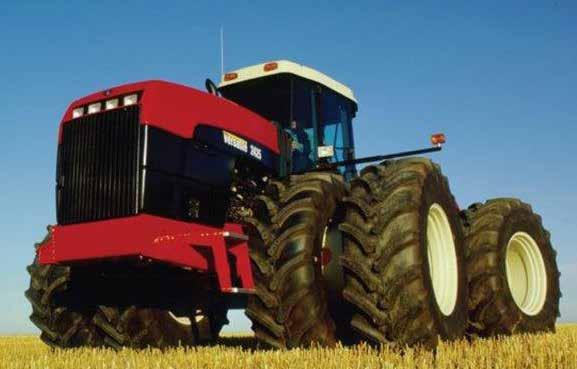
2 minute read
industry
Increasing fuel efficiency and reducing costs in the agricultural industry
From simple things you can do like checking tyre pressure to leveraging the latest in agriculture technology, there are several ways farmers can increase fuel efficiency and save money. When the harvest season approaches, we know the last thing you want to worry about as someone who works in the agriculture industry is your fuel bill. That’s why we’ve pulled together some hints and tips to help boost fuel efficiency and save you money.
Advertisement
Healthy engine = better fuel economy
Engine maintenance is key: Maintain and replace your air intake filters in line with the manufacturer’s specifications to ensure that enough air can enter the engine. Removing air intake filters and banging them on the tyre to clean them is a bad idea.
Minimise time spent at idle
If you leave your engine on while you’re taking a break or catching up with neighbours, you’re

using fuel but not getting any value from it. It’s a simple change that can save money. Extended times spend at idle can also have a negative impact on engine life.
Easy, tiger!
Aggressive driving can increase fuel consumption, so avoid using unnecessary throttle. Can cultivation be done in a higher gear or baling done in Eco PTO mode to reduce engine speed? Try it. Most modern tractors display fuel consumption information to help you decide.
Get your tyre pressure right
Low tyre pressure will increase fuel usage, but remember when operating in a muddy environment, low tyre pressures help to increase traction and reduce wheel slip, which will actually reduce wasted fuel. Many tractors are now fitted with tools to assist in generating traction and minimising wheel slip.
Keep radiators and radiator screens clean
This will avoid any excess fan-on times and reduce the energy consumed by fan operation.
Be mindful of excess weight
Using ballast in the field to achieve better weight distribution and traction, which will reduce fuel consumption overall, but avoid carrying excess weight when hauling loads at higher speeds. Take wheel weights off when hauling straw and fill your fuel tank with only the fuel you need. Remember, if you need 50 gallons to do a job, having a full tank will mean you’ve carried around more than 500 lb of additional weight throughout the day.
Check those oils
Axle oil, rear axle oil and hydraulic oils should all be checked to ensure they are in-line with the manufacturer’s maintenance requirements and topped up where necessary. If the tractor is running low, it must work harder to cool the system, meaning more fuel is used.
Using the right equipment matters
Use the right equipment for the job: Using appropriately sized equipment will help reduce your fuel bill. Don’t use a super heavy-duty tractor for grain carting if a 140 hp tractor will probably do.
Are you using those features correctly?
Use diff-lock and four-wheel drive appropriately: If these features aren’t used correctly, it can cause drag or wheel slip. You may have automatic settings to assist in using these features properly.
Technology can be your friend
Make use of your vehicle’s features! Tools such as headland management, GPS coordination and field mapping have all been developed by OEMs to help you get the most out of their equipment. Your local equipment dealer will be able to advise the best tools for your specific operation – if you don’t ask, you don’t get!










